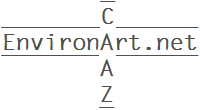
:
:
:
|
If you happened to be in Venice around the opening of this year's international architecture biennial with the theme ‘Freespace’, visiting the Pavilion of Saudi Arabia contributed surprisingly fresh and very relevant aspects to the global forum discussing 21st century designs for our living space. Commissioned by Dr. Ahmed Mater (Misk Art Institute) with Stephen Stapleton and Elena Scarpa, the curators Jawaher Al-Sudairy and Dr. Sumayah A-Solaiman collaborated with the architects Abdulrahman Gazzaz and Turki Gazzaz, founders of Bricklab, to create an exhibit space for presenting not only the historical development of a specifically Saudi Arabian urban design status quo but also universally applicable ideas for correcting some of the modern problems inherent to rapid urbanization everywhere. By ingeniously combining two materials typical to Saudi Arabia—a resin by-product from the oil industry mixed with naturally occurring desert sand—the architects erected a warmly lit framework for their high-tech graphic displays in five spaces that consecutively elaborate their ‘Spaces in Between’ narrative. The visitor is taken along a path depicting urban sprawl resulting from accelerated 20th century development in four major cities of the Kingdom. How the sole focus on automobiles as the main method of transportation profoundly affected urban architecture and human behavior in Saudi Arabia is communicated in a video of street scenes and a cunningly poetic display of discarded cell phones. The resulting isolation—drivers in air-conditioned vehicles, communicating wirelessly, moving in their disconnected urban spaces—is shown in contrast to the by far too few public spaces conceived for human interaction by urban planners. Inclusion as a social ideal is suggested as an urban design remedy in Space 5 by evoking a traditional communal ‘majlis’, a living room as still found in the older houses of Jeddah. One exits the pavilion via a final ‘free space’ where randomly placed seating lacking any order displays the potential for isolation that can result from purely fortuitous, unchecked commercial development. On the eve of the pavilion’s opening, a special treat awaited Saudi and international guests: an invitation hosted by Saudi Arabia’s Misk Art Institute to the magnificent 15th century Palazzo Soranzo Van Axel recently re-opened after a decade of renovation. Still predominantly Venetian Gothic in style, the building shows early Renaissance influences as well as Byzantine elements saved by the Soranzos from the house formerly situated on the same site. Backlit by candlelight all the way up the grand external staircase to the exquisite crenellations on top of the roof, the evening started with a reception held on the ground floor of the so-called second courtyard. In good foresight, the palazzo was originally planned and built with several entries and courtyards by the owner to accommodate his sons and their future need for urban space. Following the reception, guests were invited to ascend the staircase for dinner served in the palazzo’s piano nobile. As commissioner of Saudi Arabia’s first National Pavilion at the International Architecture Biennale, Dr. Ahmed Mater thanked all contributors by recalling the tremendous effort of staging such a project, calling to mind the “privilege and pressure” it means to capture the unique moment of change happening in Saudi Arabia at present. German Consul-General to Jeddah Holger Ziegeler added “Saudi Arabia’s pavilion engaged Biennale audiences by being socially relevant, professional and artistic at the same time. I am very happy that its creators will participate in Germany’s upcoming Uckermark Festival.” |
: